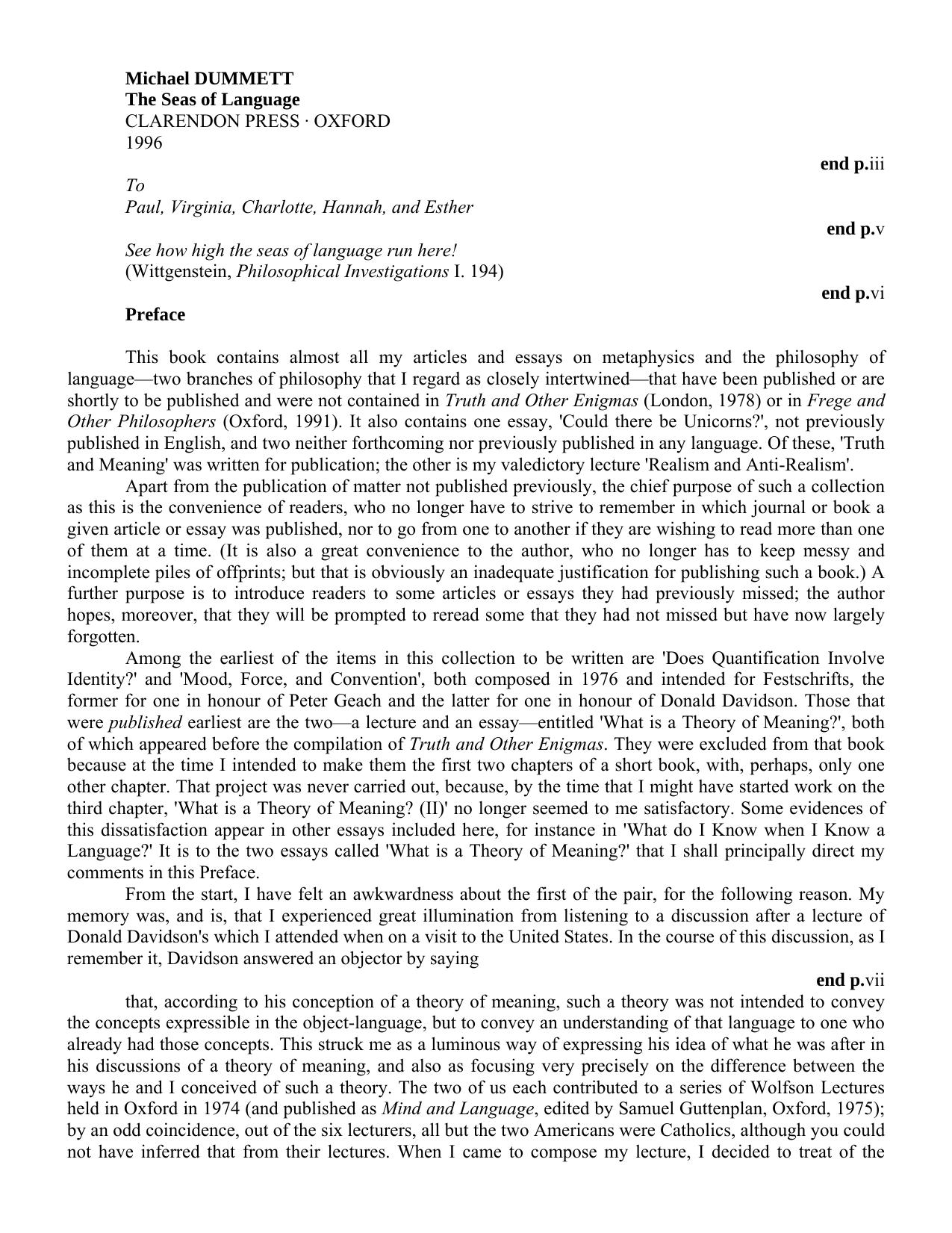The Seas of Language by Michael Dummett

Author:Michael Dummett [Dummett, Michael]
Language: eng
Format: epub, pdf
ISBN: 0198236212
A semantic theory of this kind is, evidently, a highly non-realistic one, since it involves rejecting the principle of bivalence. A realistic theory, on the other hand, incorporates the principle of bivalence, the principle that every meaningful sentence is determined as true or as false, and so entails the weaker principle, namely that every meaningful sentence is determined as true or as not true. Without at present enquiring more closely into the rationale that may be offered for admitting a distinction between a statement's failing to be true and its actually being false, let us say that a semantic theory which involves the weaker principle is an objectivist semantics: a realistic semantics is necessarily objectivist, but an objectivist semantics need not be realistic. An objectivist semantics incorporates a notion of truth which is not closely linked to the possibility of our recognizing a statement as true: on such a semantic theory, a statement may be true even though we have not recognized it as such, and, possibly, even though we have no means of doing so. By contrast, in such a semantic theory as that of Heyting for mathematical statements, intuitionistically interpreted, the only admissible notion of truth is one directly connected with our capacity for recognizing a statement as true: the supposition that a statement is true is the supposition that there is a mathematical construction constituting a proof of that statement.
In any objectivist semantic theory, it will be possible to regard the semantic values of the components of any sentence as jointly determining it either as true or as not true; and so we may describe such a semantic theory as specifying, for each type of expression, what has to be associated with an expression of that type in order that every sentence in which the expression occurs should be determined as true or otherwise. Thus, in particular, according to the classical two-valued semantics, there must be associated with each proper name or other singular term an object from the domain, with each one-place predicate a mapping from the domain into the set of the two truth-values, true and false, with a sentential connective a truth-function, with a sentence, considered as capable of serving as a constituent in a more complex sentence, a truth-value, and so forth.
An understanding of a sentence must involve a grasp of how it is determined as true, if it is true, in accordance with its composition: hence a theory of meaning must ascribe to a speaker of the language an implicit grasp of the underlying semantic theory. A grasp of the meaning of a specific expression will thus involve a knowledge of the kind of semantic value it may have, in virtue of the linguistic type or category to which it belongs. It will not, in general, amount, in any straightforward way, to a knowledge of the semantic value of the expression, since, on any objectivist semantic theory, once we know the semantic values of all the component expressions in some sentence, we
Download
This site does not store any files on its server. We only index and link to content provided by other sites. Please contact the content providers to delete copyright contents if any and email us, we'll remove relevant links or contents immediately.
The remains of the day by Kazuo Ishiguro(8815)
Tools of Titans by Timothy Ferriss(8211)
Giovanni's Room by James Baldwin(7188)
The Black Swan by Nassim Nicholas Taleb(7009)
Inner Engineering: A Yogi's Guide to Joy by Sadhguru(6722)
The Way of Zen by Alan W. Watts(6503)
Asking the Right Questions: A Guide to Critical Thinking by M. Neil Browne & Stuart M. Keeley(5629)
The Power of Now: A Guide to Spiritual Enlightenment by Eckhart Tolle(5603)
The Six Wives Of Henry VIII (WOMEN IN HISTORY) by Fraser Antonia(5394)
Astrophysics for People in a Hurry by Neil DeGrasse Tyson(5130)
Housekeeping by Marilynne Robinson(4328)
12 Rules for Life by Jordan B. Peterson(4249)
Double Down (Diary of a Wimpy Kid Book 11) by Jeff Kinney(4204)
The Ethical Slut by Janet W. Hardy(4172)
Skin in the Game by Nassim Nicholas Taleb(4161)
Ikigai by Héctor García & Francesc Miralles(4123)
The Art of Happiness by The Dalai Lama(4063)
Skin in the Game: Hidden Asymmetries in Daily Life by Nassim Nicholas Taleb(3929)
Walking by Henry David Thoreau(3892)
